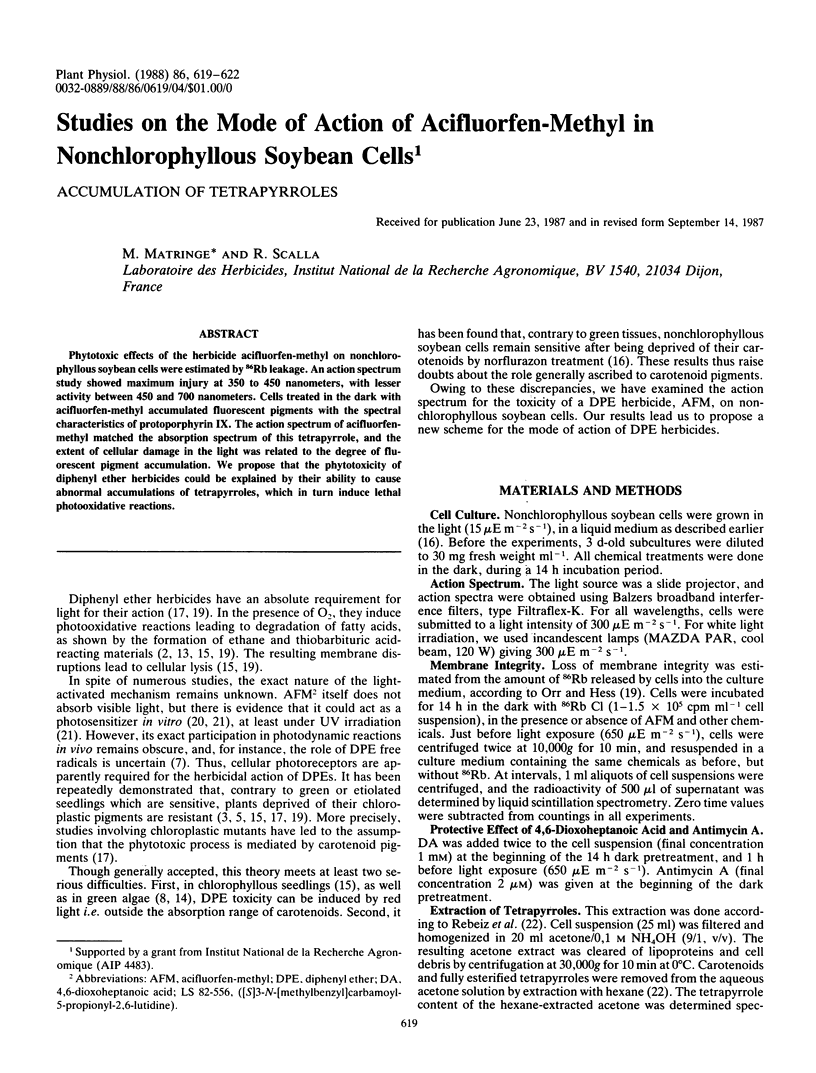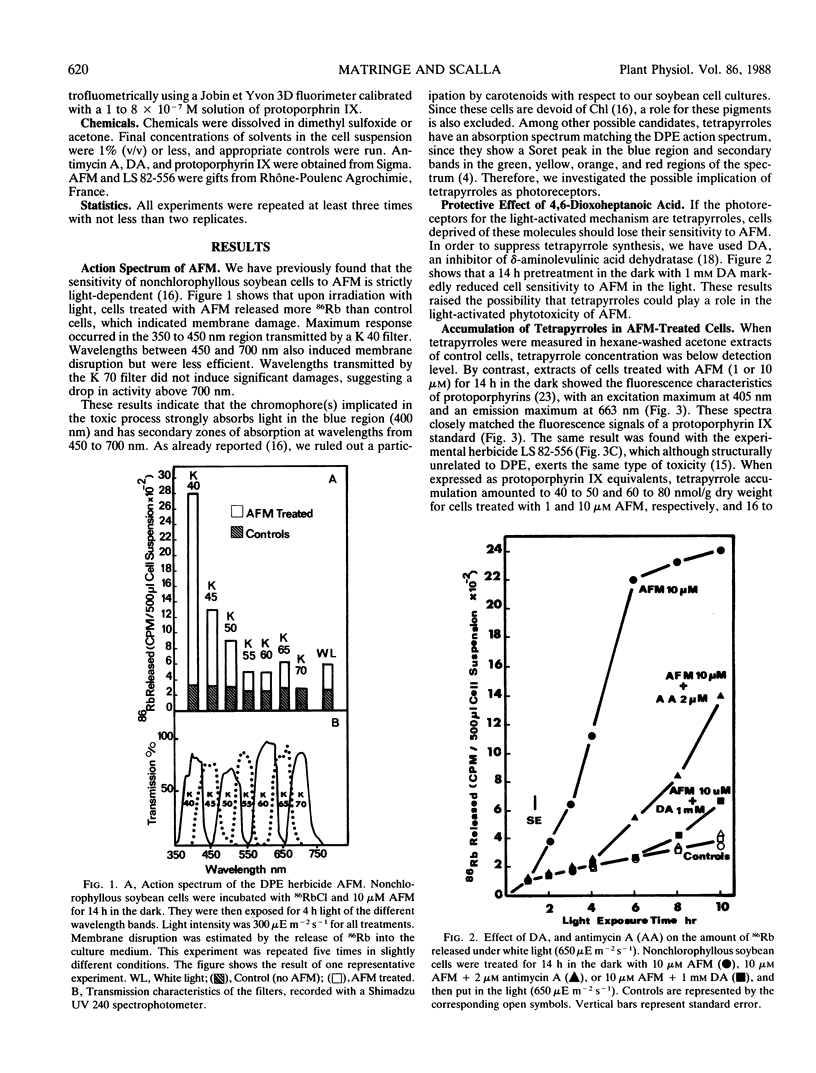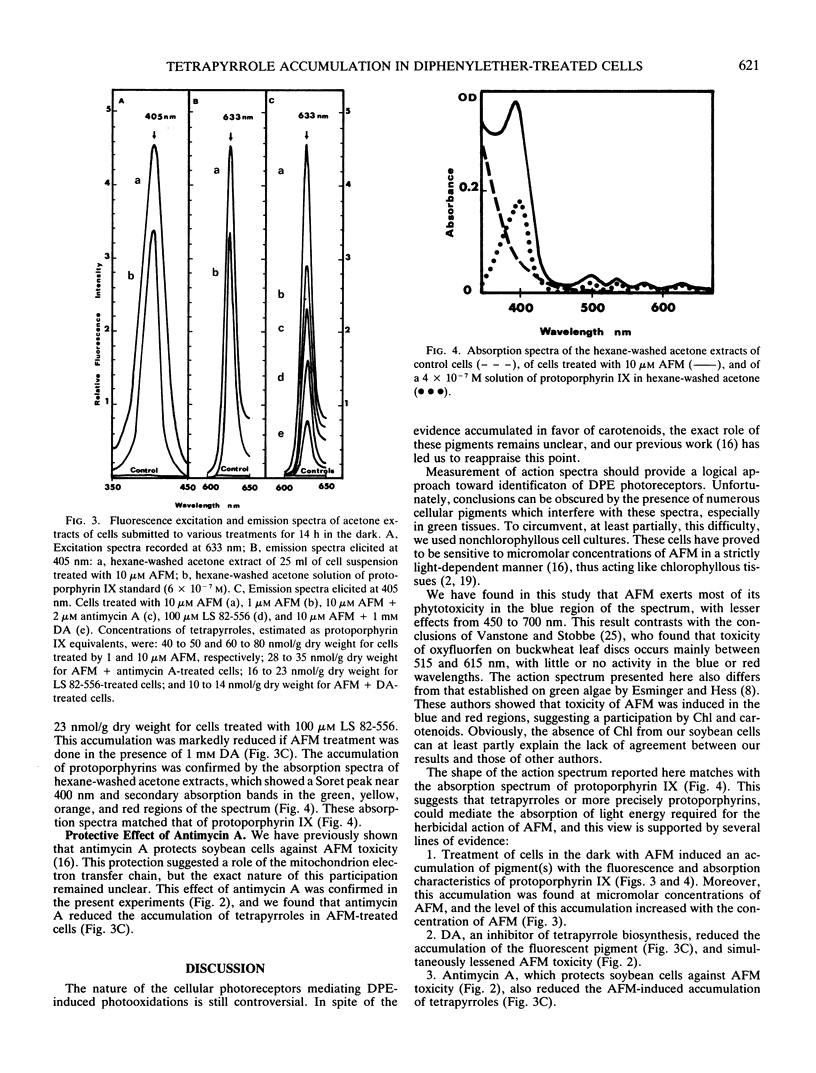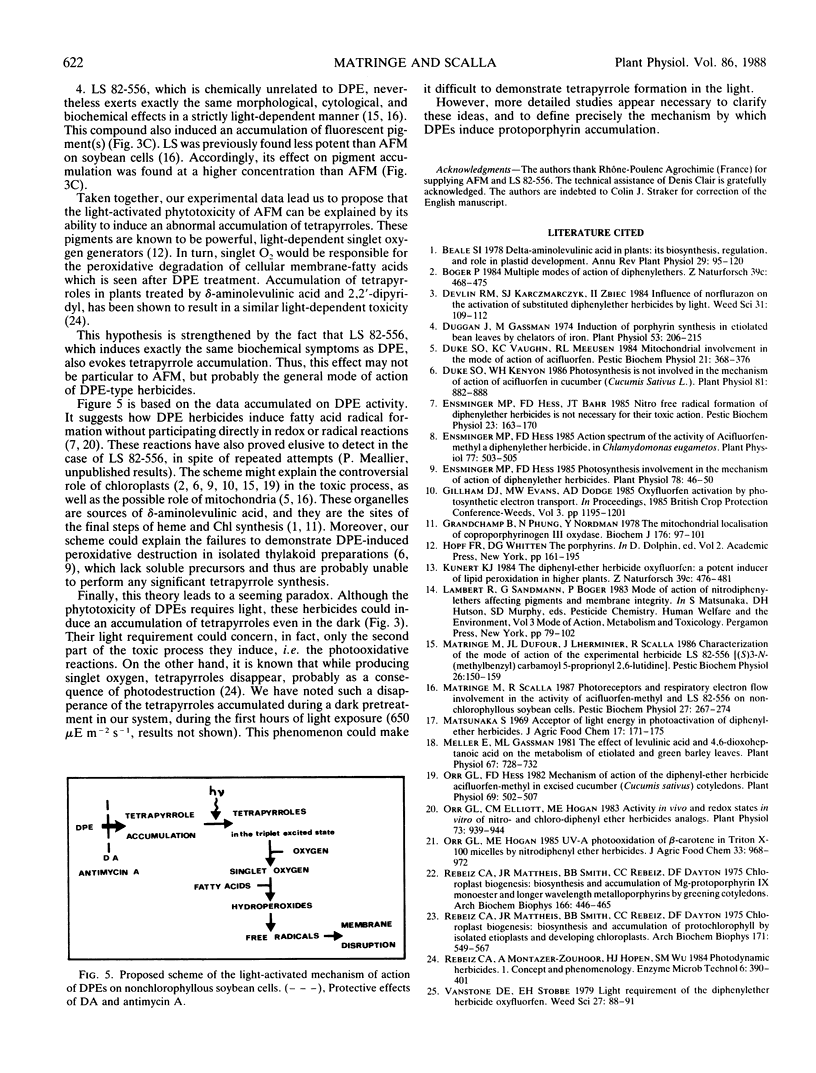Abstract
Phytotoxic effects of the herbicide acifluorfen-methyl on nonchlorophyllous soybean cells were estimated by 86Rb leakage. An action spectrum study showed maximum injury at 350 to 450 nanometers, with lesser activity between 450 and 700 nanometers. Cells treated in the dark with acifluorfen-methyl accumulated fluorescent pigments with the spectral characteristics of protoporphyrin IX. The action spectrum of acifluorfen-methyl matched the absorption spectrum of this tetrapyrrole, and the extent of cellular damage in the light was related to the degree of fluorescent pigment accumulation. We propose that the phytotoxicity of diphenyl ether herbicides could be explained by their ability to cause abnormal accumulations of tetrapyrroles, which in turn induce lethal photooxidative reactions.
Full text
PDF



Selected References
These references are in PubMed. This may not be the complete list of references from this article.
- Duggan J., Gassman M. Induction of porphyrin synthesis in etiolated bean leaves by chelators of iron. Plant Physiol. 1974 Feb;53(2):206–215. doi: 10.1104/pp.53.2.206. [DOI] [PMC free article] [PubMed] [Google Scholar]
- Duke S. O., Kenyon W. H. Photosynthesis Is Not Involved in the Mechanism of Action of Acifluorfen in Cucumber (Cucumis sativus L.). Plant Physiol. 1986 Jul;81(3):882–888. doi: 10.1104/pp.81.3.882. [DOI] [PMC free article] [PubMed] [Google Scholar]
- Ensminger M. P., Hess F. D. Action Spectrum of the Activity of Acifluorfen-methyl, a Diphenyl Ether Herbicide, in Chlamydomonas eugametos. Plant Physiol. 1985 Feb;77(2):503–505. doi: 10.1104/pp.77.2.503. [DOI] [PMC free article] [PubMed] [Google Scholar]
- Ensminger M. P., Hess F. D. Photosynthesis involvement in the mechanism of action of diphenyl ether herbicides. Plant Physiol. 1985 May;78(1):46–50. doi: 10.1104/pp.78.1.46. [DOI] [PMC free article] [PubMed] [Google Scholar]
- Grandchamp B., Phung N., Nordmann Y. The mitochondrial localization of coproporphyrinogen III oxidase. Biochem J. 1978 Oct 15;176(1):97–102. doi: 10.1042/bj1760097. [DOI] [PMC free article] [PubMed] [Google Scholar]
- Meller E., Gassman M. L. The effects of levulinic Acid and 4,6-dioxoheptanoic Acid on the metabolism of etiolated and greening barley leaves. Plant Physiol. 1981 Apr;67(4):728–732. doi: 10.1104/pp.67.4.728. [DOI] [PMC free article] [PubMed] [Google Scholar]
- Orr G. L., Elliott C. M., Hogan M. E. Activity in vivo and redox States in vitro of nitro- and chlorodiphenyl ether herbicide analogs. Plant Physiol. 1983 Dec;73(4):939–944. doi: 10.1104/pp.73.4.939. [DOI] [PMC free article] [PubMed] [Google Scholar]
- Orr G. L., Hess F. D. Mechanism of Action of the Diphenyl Ether Herbicide Acifluorfen-Methyl in Excised Cucumber (Cucumis sativus L.) Cotyledons : LIGHT ACTIVATION AND THE SUBSEQUENT FORMATION OF LIPOPHILIC FREE RADICALS. Plant Physiol. 1982 Feb;69(2):502–507. doi: 10.1104/pp.69.2.502. [DOI] [PMC free article] [PubMed] [Google Scholar]
- Rebeiz C. A., Mattheis J. R., Smith B. B., Rebeiz C. C., Dayton D. F. Chloroplast biogenesis. Biosynthesis and accumulation of protochlorophyll by isolated etioplasts and developing chloroplasts. Arch Biochem Biophys. 1975 Dec;171(2):549–567. doi: 10.1016/0003-9861(75)90065-x. [DOI] [PubMed] [Google Scholar]
- Rebeiz C. A., Mattheis J. R., Smith B. B., Rebeiz C., Dayton D. F. Chloroplast biogenesis. Biosynthesis and accumulation of Mg-protoprophyrin IX monoester and longer wavelength metalloporphyrins by greening cotyledons. Arch Biochem Biophys. 1975 Feb;166(2):446–465. doi: 10.1016/0003-9861(75)90408-7. [DOI] [PubMed] [Google Scholar]


